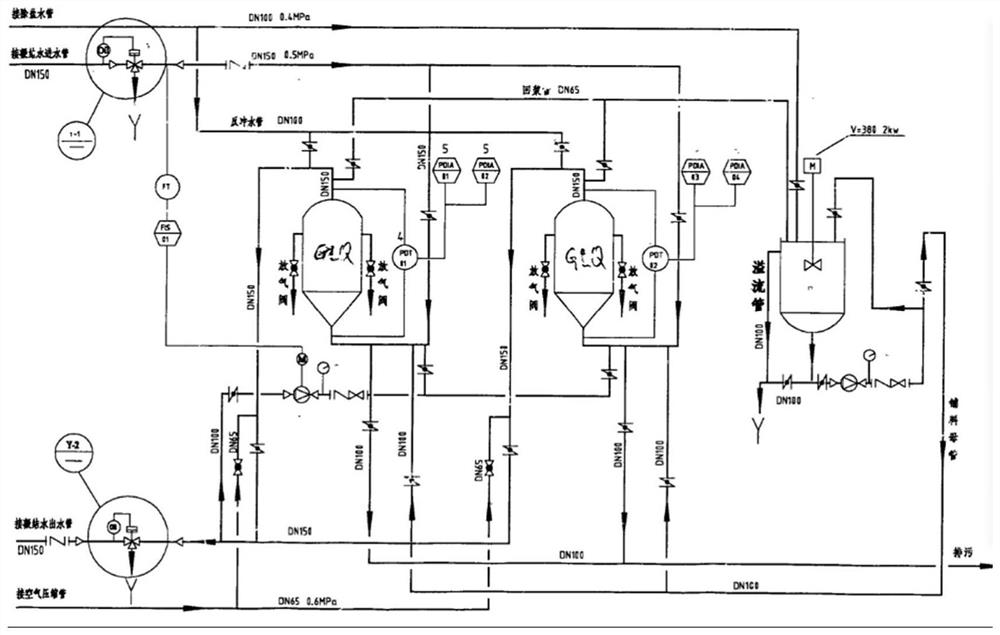Interception type composite membrane oil and iron removal process
An interception and process technology, which is applied in the field of interception composite membrane degreasing and iron removal process, can solve the problems of high operating cost, high cost of interception filter element, large volume, etc., and achieve long operation period, small dirt holding capacity and small volume Effect
- Summary
- Abstract
- Description
- Claims
- Application Information
AI Technical Summary
Problems solved by technology
Method used
Image
Examples
Embodiment Construction
[0023] The specific implementation manners of the present invention will be further described in detail below in conjunction with the accompanying drawings and embodiments. The following examples are used to illustrate the present invention, but are not intended to limit the scope of the present invention.
[0024] The invention provides a technical solution: according to the attached Figure 1-2 It can be seen that this case is an intercepting composite membrane degreasing and iron removal process, which mainly includes: a housing 1, a water inlet 101 is provided at the bottom of the housing 1, an oil discharge port 102 is provided on the upper side of the side wall of the housing 1, and an outlet is provided at the top of the housing 1. The water port 103 is provided with a film-coated intercepting and oil-removing filter element 2 inside the housing 1 .
[0025] Wherein, the wire-wound filter element is provided with an oil and iron removal film composed of a lignocellulos...
PUM
 Login to View More
Login to View More Abstract
Description
Claims
Application Information
 Login to View More
Login to View More - R&D
- Intellectual Property
- Life Sciences
- Materials
- Tech Scout
- Unparalleled Data Quality
- Higher Quality Content
- 60% Fewer Hallucinations
Browse by: Latest US Patents, China's latest patents, Technical Efficacy Thesaurus, Application Domain, Technology Topic, Popular Technical Reports.
© 2025 PatSnap. All rights reserved.Legal|Privacy policy|Modern Slavery Act Transparency Statement|Sitemap|About US| Contact US: help@patsnap.com


